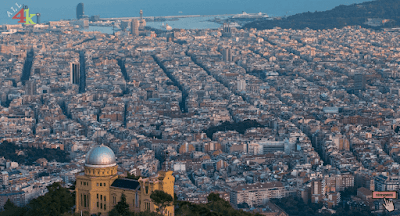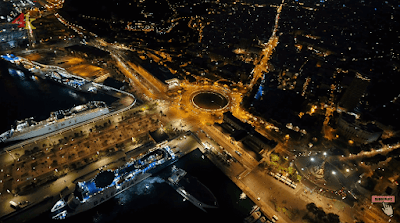The origins of Barcelona as a city may be traced all the way back to the time of the Romans.
The Romans are considered to be the beginning of Barcelona's history. There have been previous people in Barcelona, but the Romans are the ones who create a permanent city in the Montjuc valley for the very first time.
However, Catalonia did not become an important region until several centuries after it was first settled. This came to pass in particular when it had a meeting with Aragon in the year 1137. This occurrence was to mark the beginning of a period of growth that, throughout the 13th and 14th centuries, would establish Catalan as one of the most significant languages spoken in the Mediterranean region.
After this, at the beginning of the year 1400, terrible times started for Catalonia: in 1410, the last king of Aragon passed away, leaving Catalonia without offspring; thus, the region was annexed to the kingdom of Madrid. The world would not see another period of such magnificence until the 19th century. The period known as the Renaissance was characterized by a flowering of artistic and cultural expression as well as linguistic and architectural innovation.
The Roman city of Barcino, whose full name was Julia Augusta Faventia Paterna Barcino, was a model city in the sense that it had two major streets that intersected in the central square. These streets were called decumanus maximus and cardo maximus. Walls surrounded the city, and there was an aqueduct and a temple in the city's core.
The construction of the city began about the year 12 a.C. It served primarily as an administrative center and was not big enough to house a significant population. A significant percentage of the population resided in the surrounding countryside. Cities such as Tarragona (to the south) and Emporion, Nimes, and Orange (to the north of Barcelona) were of considerably larger significance to the Romans during the first few centuries of their occupation of the Iberian Peninsula than Barcelona was.
Around the year 300, when the Roman Empire was entering its years of difficulty, people from the north started invading the peninsula in an attempt to take control of it. One of the new peoples to arrive from the north was the Visigoths, and in the year 415, its monarch Atalfo decided to make Barcelona the capital of the Visigoth kingdom under his rule.
Following in the footsteps of the Visigoths were the Arabs. In the year 711, the Berber Tariq led an army of around 1700 soldiers over the Strait of Gibraltar and quickly took control of the southern portion of the peninsula after just a few years of fighting. After just seven years, the Arabs were able to gain control of almost two thirds of the Iberian Peninsula.
There aren't many relics left over from the time when the Arabs inhabited Barcelona, but the City History Museum has a few artifacts and coins from that period on display. Guifré El Pilos, also known as Wifredo the Hairy, was the leader who helped Barcelona seize control of the region that is now known as Catalonia.
A few decades later, a significant occurrence took place: on August 11, 1137, the daughter of Ramiro II of Aragon married Ramon Berenguer IV, the Count of Barcelona, when she was only two years old. This was an important occasion. As a result, the title of "kingdom" was bestowed to Catalonia. Because of this, the groundwork was laid for a period of growth, which elevated Catalonia and Aragon to the status of a powerhouse in the Mediterranean together with Genoa and Venice. In the years that followed, Catalonia was successful in capturing the islands of Mallorca, Menorca, Ibiza, Valencia, Sicily, and Naples, as well as Sardinia. Catalonia even exercised power over the city of Athens for a brief period of time.
Since Mart el Humano did not leave any children behind when he passed away in 1410, the Kings of Antequera in Madrid were able to seize control of Catalonia. In the aftermath of the War for the Succession of Spain, Catalonia's situation became even more precarious. As a result of Catalonia's assistance for the King of Austria during the major struggle, the victor of the war, King Philip V of France, imposed a punishment on the region.
This state of affairs persisted until the middle of the nineteenth century, when Catalonia saw an industrial revolution, ushering in an era of economic growth for the province. It was the beginning of what is known as the Renaissance (La Reneixenca). A significant debt was due by artists such as Antoni Gaud, Domènech I Montaner, Puig I Cadafalch, Salvador Dal, Joan Miró, and Pablo Picasso to the Renaissance movement for most of their work up to the middle of the 20th century.





